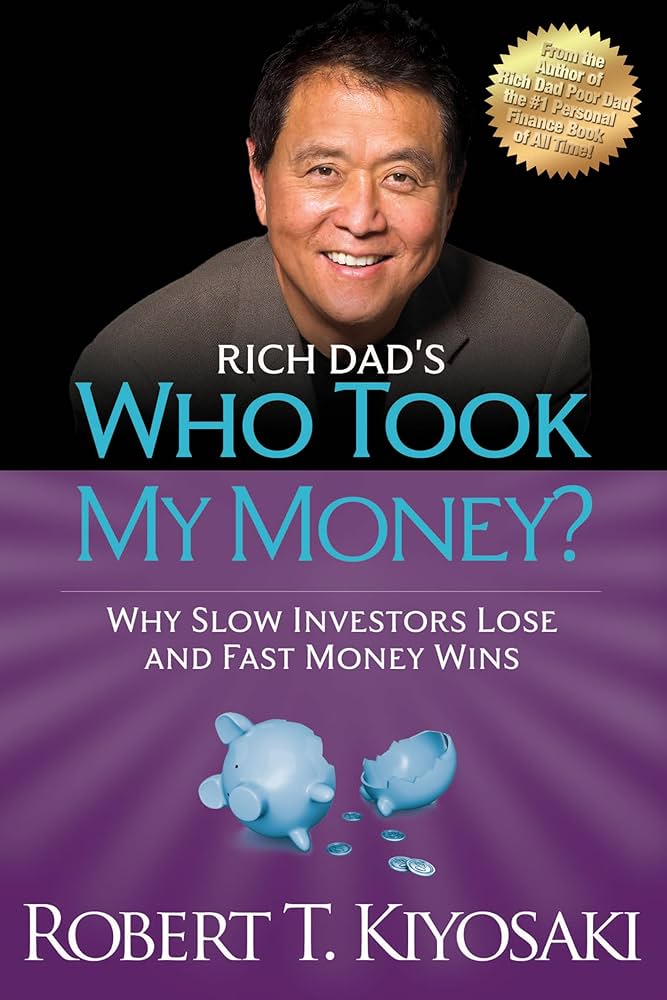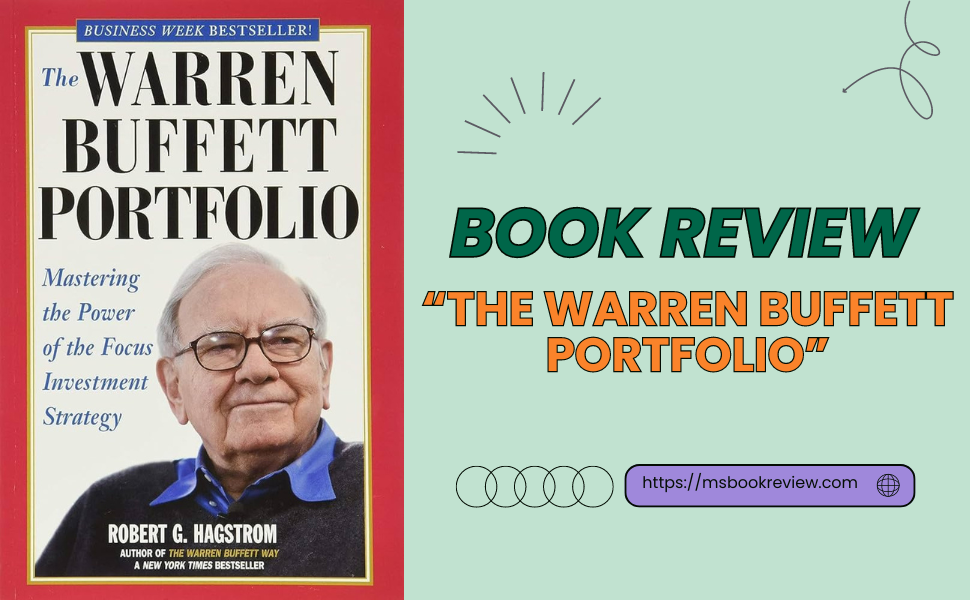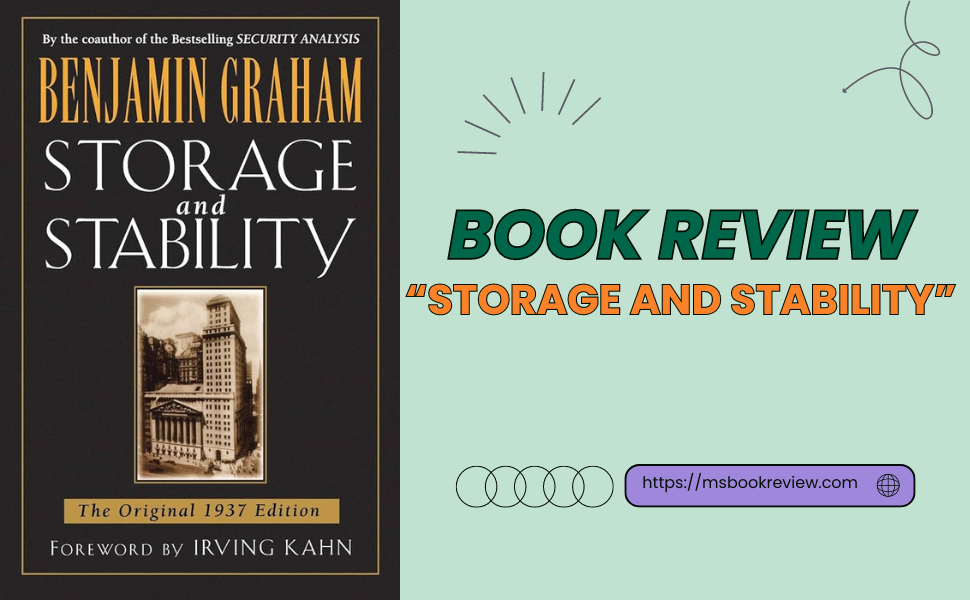Msbookreview.com, have you ever wondered where your hard-earned money goes and why it grows slower than you’d hoped? In Who Took My Money, Robert T. Kiyosaki tackles this question head-on, revealing the hidden traps and pitfalls that often derail our financial progress.
This book isn’t just about identifying where your money is going; it’s a comprehensive guide to making your money work harder through smarter investing.
In this review, we’ll explore the critical elements of Who Took My Money, answering essential questions about the author, the book’s synopsis, its advantages and disadvantages, personal reflections, and the moral message it conveys.
Whether you’re an investor looking to optimize your portfolio or someone trying to understand the complexities of financial management, this review will provide valuable insights into why this book is a must-read.
Table of Contents
ToggleAuthor of Who Took My Money
Robert T. Kiyosaki, the author of Who Took My Money, is a globally recognized financial educator, entrepreneur, and bestselling author.
He is best known for his book Rich Dad Poor Dad, which has transformed how millions think about money, education, and personal finance.
With decades of experience in entrepreneurship, real estate, and investing, Robert Kiyosaki has dedicated his life to teaching individuals how to achieve financial independence through financial literacy and intelligent investing.
In Who Took My Money, Robert Kiyosaki builds on his previous works by focusing on investing, offering readers insights into how they can take control of their financial futures and avoid common investing pitfalls.
Synopsis of Who Took My Money

Who Took My Money is a critical examination of traditional investment strategies and the financial advice commonly given to the average investor.
Robert Kiyosaki argues that much of this advice is designed to benefit financial institutions more than individual investors, leading many people to wonder why their investments aren’t growing as expected.
The book is structured around the idea that time is one of the most critical factors in investing and that many traditional investment vehicles, such as mutual funds, need to capitalize on this.
Robert Kiyosaki argues that these investments often deliver mediocre returns, primarily because they benefit the fund managers more than the investors themselves.
Instead, Robert Kiyosaki advocates for a more active approach to investing, prioritizing cash flow, financial education, and a deep understanding of the markets.
The key themes of the book include:
1. The Importance of Cash Flow
Robert Kiyosaki emphasizes that the most successful investors focus on cash flow rather than capital gains.
He argues that cash flow investments, such as real estate or dividend-paying stocks, provide a more reliable and immediate return on investment, allowing investors to reinvest and grow their wealth more effectively.
2. The Dangers of Mutual Funds
Robert Kiyosaki critiques the widespread reliance on mutual funds as a safe investment strategy. He explains that while mutual funds are often marketed as low-risk, they carry significant risks, including high fees, poor performance, and a lack of control over the investments. Kiyosaki encourages readers to consider alternatives that offer better returns and more control.
3. The Power of Financial Education
A recurring theme in Robert Kiyosaki’s work, financial education is highlighted as the key to successful investing.
Robert Kiyosaki argues that without a solid understanding of how money and investments work, individuals are at the mercy of financial advisors and institutions that may not have their best interests at heart.
He advocates for continuous learning and taking a proactive approach to managing one’s investments.
4. Taking Control of Your Investments
Robert Kiyosaki urges readers to take control of their financial futures by becoming more involved in their investment decisions.
This includes understanding the risks and rewards of different investment vehicles, seeking opportunities that align with their financial goals, and being willing to take calculated risks.
Throughout the book, Robert Kiyosaki illustrates these concepts with real-life examples, personal anecdotes, and case studies.
He also provides actionable steps readers can take to improve their investment strategies and avoid the common traps that drain their wealth.
Advantages of Who Took My Money
One of the primary strengths of Who Took My Money is its focus on challenging the conventional wisdom around investing.
Robert Kiyosaki’s willingness to critique widely accepted investment strategies, such as mutual funds, is refreshing and thought-provoking.
The book gives readers a new perspective on investing, emphasizing the importance of cash flow and financial education over traditional methods that may not deliver the desired results.
Another significant advantage of the book is its practical advice. Robert Kiyosaki doesn’t just identify problems; he offers solutions.
The book contains actionable steps readers can take to improve their investment strategies, from focusing on cash flow to seeking alternative investment opportunities. This practical approach makes the book valuable for novice and experienced investors.
Another major plus is the book’s emphasis on financial education. Robert Kiyosaki argues that knowledge is the key to financial success, and he encourages readers to take control of their education and become more informed about their investment options.
This focus on empowerment is significant in today’s complex financial landscape, where traditional advice may no longer be sufficient.
Disadvantages of Who Took My Money
While Who Took My Money offers valuable insights, it has drawbacks. One potential disadvantage is that the book’s content may feel repetitive to readers familiar with Robert Kiyosaki’s other works.
Many of the themes and concepts discussed in the book are consistent with Robert Kiyosaki’s earlier teachings, which may make the book less impactful for those who have already embraced his philosophy.
Another potential drawback is that the book’s critique of mutual funds and traditional investment strategies may only resonate with some readers.
Some may feel that Robert Kiyosaki’s perspective is too critical or dismissive of investment vehicles that have worked for them in the past.
Additionally, while Robert Kiyosaki provides alternatives, these strategies often require more financial knowledge and involvement, which may only be feasible for some.
Additionally, some readers may find that the book’s emphasis on cash flow and alternative investments needs to provide more detailed guidance for those new to these concepts.
While Robert Kiyosaki offers practical advice, readers may need to seek additional resources or support to implement these strategies fully in their investment portfolios.
Personal Opinion about Who Took My Money
As someone who read this book, I have a personal opinion about it. Who Took My Money is a compelling and insightful read, particularly for those looking to challenge traditional investment strategies.
Robert Kiyosaki’s critique of mutual funds and emphasis on cash flow investing provide a fresh perspective that encourages readers to think critically about where their money is going and how they can make it work harder for them.
One of the aspects I appreciate most about the book is its focus on financial education. Robert Kiyosaki’s message that knowledge is power in the world of investing is both empowering and practical.
The book’s actionable advice on how to take control of one’s investments and focus on cash flow is precious for those looking to build long-term wealth.
However, I also recognize that the book may only be for some. The strong critique of traditional investment strategies and the emphasis on more active and involved approaches may only resonate with some readers, particularly those who prefer a more hands-off approach.
Additionally, the book’s content may feel repetitive to those familiar with Robert Kiyosaki’s earlier works.
Overall, I highly recommend Who Took My Money to anyone interested in taking a more active role in their financial future and seeking alternative investment strategies.
The book provides a clear and actionable roadmap for optimizing their investments and achieving lasting financial success.
Moral Message of Who Took My Money
The moral message of Who Took My Money is clear: financial independence requires taking control of your investments and being proactive in managing your money.
Robert Kiyosaki emphasizes that traditional investment strategies like mutual funds are not enough to achieve your financial goals.
Instead, he advocates for a more active approach that focuses on cash flow, financial education, and calculated risks.
Robert Kiyosaki also underscores the importance of financial education in achieving long-term success. He argues that knowledge is the key to making informed decisions and avoiding the common traps that can drain your wealth.
The book’s ultimate message is empowerment: with the proper knowledge, mindset, and strategies, anyone can take control of their financial future and achieve lasting success.
Conclusion
Who Took My Money is more than just a critique of traditional investing; it’s a comprehensive guide to taking control of your financial future and making your money work harder for you.
Robert T. Kiyosaki offers readers a unique blend of practical advice, personal anecdotes, and critical insights into investing, providing valuable guidance for those looking to optimize their portfolios and achieve financial independence.
While the book may have limitations, its lessons are timely and relevant in today’s increasingly complex financial landscape.
Whether you’re an experienced investor or looking to understand better where your money is, Who Took My Money offers the knowledge and tools needed to navigate today’s economy and achieve lasting financial success.
As you explore the concepts and strategies outlined in the book, you’ll gain the confidence and understanding needed to make informed decisions and build a secure financial future.
This book is essential for anyone ready to take the first steps toward smarter investing and financial independence.
If you’re ready to take control of your financial future, don’t miss out on exploring 20 Best Books by Robert Kiyosaki.













1 Comment
[…] Who Took My Money, Robert Kiyosaki critiques traditional investment strategies like saving in the bank and investing […]